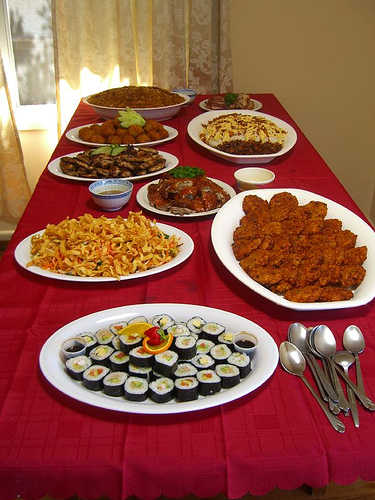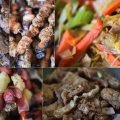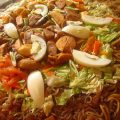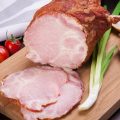It is important in the food service business to know how to cook for a big number of people. One should study this standard measure very well to be able to estimate contract price, purchase ingredients and avoid possible loss.

Suggested Portion Serving for Meat
In quantity cooking, one must consider the correct portion of main ingredients for every serving so that one can easily estimate the quantity of ingredients to be purchased and the profit. The following are the suggested serving size for beef, pork, chicken and seafoods. In a fine dining restaurant, all servings are weighed.
Table 1. Serving Size for Fine Dining
| Type of Meat | Portion Serving (in Grams) |
| Pork with bones (ex. Lechon kawali/spare ribs) Pork without bones (ex. Asadoladobo) Beef with bones (ex. Boiled/ pochero) Beef without bones (ex. Stew/asac/o) Chicken with bones (ex. Chicken curry/ afritada) Chicken without bones (ex. Chicken nuggets) Seafood with bones (ex. Steamed lapu-lapu) Seafood without bones (ex. Fish fillet) | 200 – 250 150 – 200 200 – 250 150 – 200 250 – 300 150 – 200 250 – 300 150 – 200 |
To determine the number of servings in a kilo of meat for a fast food/ eatery or turu-turo type of food business, the following may be used as guide:
Table 2. Quantity Per Kilo of Meat
| Type of Meat | Quantity/Kilo |
| Pork with bones Pork without bones Beef with bones Beef without bones Chicken with bones Chicken without bones Seafood with bones Seafood without bones Ground Meat without extender Ground Meat with extender like potatoes and other vegetables | 8 pcs 12 pcs 10 pcs 12 pcs 6 pcs 10 pcs 6 pcs 12 pcs 15-20 parts 32 parts |
Additional Guides in Quantity Cooking
These are other things that a food business operator must know in quantity cooking:
1. The quantity of ingredients cannot just be multiplied from a standard recipe for 5 to 6 persons or a family according to the number of diners. If your recipe is good for about 6 persons and there are 24 persons that are to eat, you cannot increase the ingredients (especially the seasonings) four times. For example, if the recipe for 6 persons needs 2 teaspoonfuls of salt, it does not necessarily need 8 teaspoons of salt for a recipe good for 24 persons. Study the adjustment of recipe and the balancing of ingredients.
2. As much as possible, use a weighing scale and measuring utensils in measuring the ingredients. In this way, the measurements of ingredients or serving size are exact. It is cheaper this way than merely estimating the ingredients.
3. Have a proper storage system of ingredients purchased in bulk. Allocate an area to store canned goods and ingredients that are not perishable. Take extra care in cleaning and storing highly perishable ingredients like meat, vegetables, egg and fish.
4. Allot three to four months trial period. This is to determine which food or meals sell and which don’t. This will also guide you to determine the quantity of ingredients to purchase and the meals that are to be included as regular menu.
5. Take extra care in storing, handling and delivering cooked foods. Cooked foods need to be stored properly to avoid spoilage. These can be covered with plastic to avoid dirt.
6. Look for regular and trusted sources of ingredients. It is better to have regular and trusted sources of ingredients because aside from being cheap, you are assured of its freshness and quality.
7. Study how to make use of leftover or excess foods to make another dish. If there is leftover lechon, it can be re-cooked into lechon paksiw. Leftover fried fish can be cooked into sarsiyado or as ingredient for fried lumpia. Meat broth can be used in cooking noodles or soup.
Source: trc.gov.ph







thank you and God bless
THANK YOU…